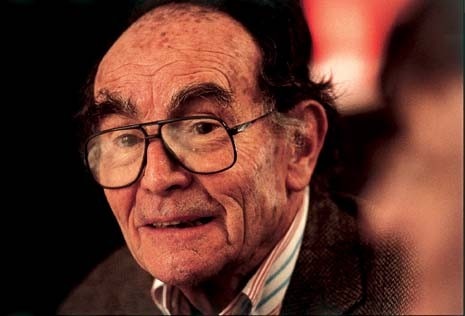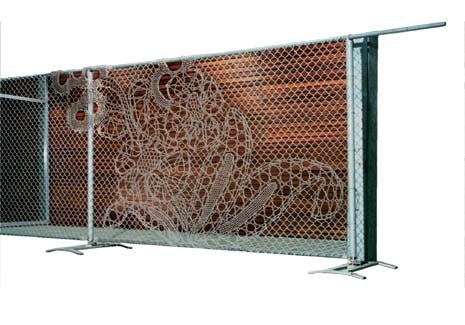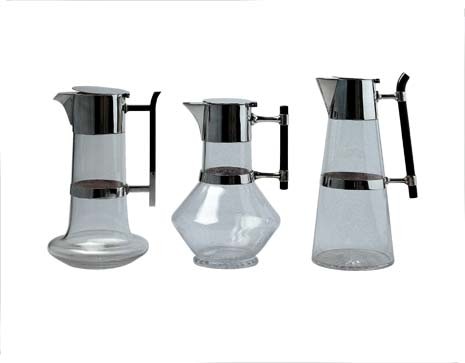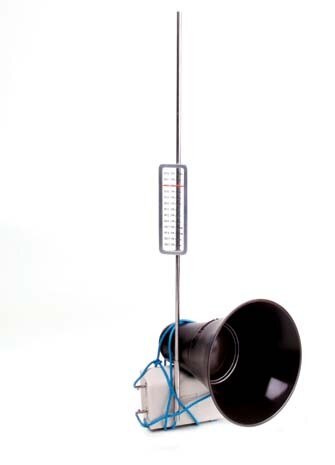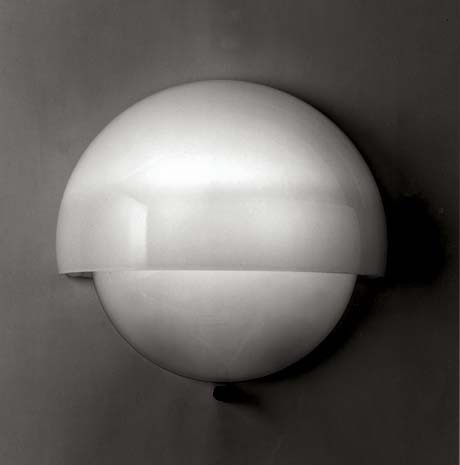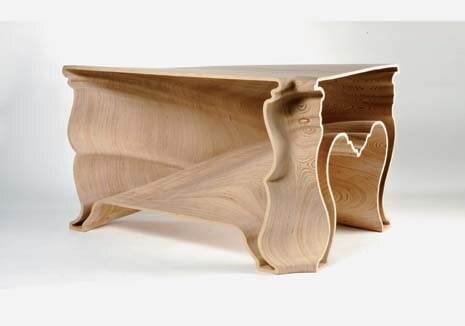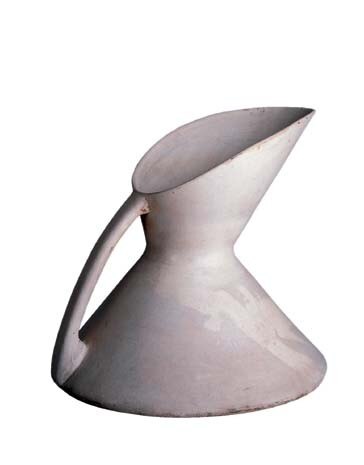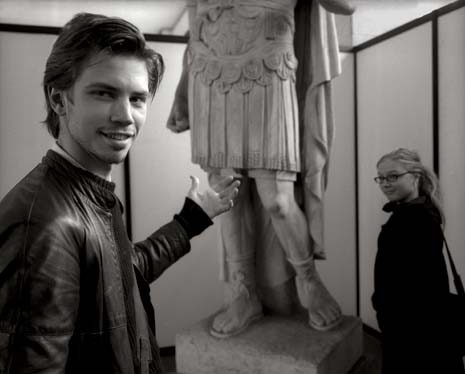The Dutch designer and the master of Italian design confront each other*. Two worlds separated by sixty years and united by a common irony. Edited by Loredana Mascheroni
Stefano Boeri: Vico, on several occasions you have argued that in Milan in the Sixties design had some very specific features that distinguished it from other design traditions. The first was its capacity to endure over time: to remain useful, interesting and intriguing for a long period. Another of its features according to you was its simplicity. Finally, you have often emphasised Italian designers’ capacity to collaborate with manufacturers’ technicians and develop a sort of collective design process. Are these exclusive characteristics that can’t be repeated?
Vico Magistretti: I am an architect, so I made houses up until the Sixties, until the end of the twelfth Triennale which marked the beginning of Italian design. There is a big difference between architecture and design in my view. In architecture you work alone, in the sense that you just say to your commissioner: this is the way we’re doing it. You wouldn’t give the owner three or four choices. There is no discussion; you have to decide everything alone, right down to the toilets, which are already made. In design, there is the manufacturer (from Cesare Cassina to Maddalena De Padova) who asks designers to comply with their production capacity. Our relationship is not to say: “Here are my drawings and I’ll be back in 20 days to see what you have done”. That is the worst way to do design. Rather, one must simply say: “We can meet and speak about how this can be done”. We consult with the people who are going to actually build the project and know the material very well, be it wood or aluminium. This kind of meeting does not require executive drawings with all the details done in large scale. They are useless. The close relationship with the producer calls for a clear concept from the designer, not a shape or style. Sketches are fine. Then there is the discussion with the builders about which way to connect the parts. This shows that you need them, not that they need you as a designer. You need to talk to them a lot in order to understand whether your concept is wrong or right. There was an important connection with the producer at the start of industrial design. The result of this “meeting”, in my view, should be simplicity. Above all, it should be a clear and simple idea.
Stefano Boeri: What exactly do you mean by “simplicity”?
Vico Magistretti: The Thonet chair, which is one of the most successful examples of designer-manufacturer relationship, lasted for over 150 years. When they had to make a certain detail, skilled craftsmen did it by hand. Now, there is technology. The meaning of design is in its numbers. It is something that is reproduced in big numbers. Back in the day, making 2,000 or even 10,000 objects was a big deal. Now you need to make a yearly amount of 100,000 or 200,000 pieces (for example of a plastic chair). Now manufacturers need to understand that even if they are making objects in wood, machines can help them. There were wonderful craftsmen all around Milan that made very high quality products. The credit didn’t go to the designers but to the high-quality craftsmanship that was already in this location. They made things that cost what they had to cost, taking four or five days to craft a chair. I remember that a plastic chair of mine could be made at the rate of one per minute. But when you are working with people, the relationship automatically becomes human, not dependent on a machine. You tell them you need them, which you really do, and start to suggest a certain concept. Then they will help you a lot to make it real, so you can say: “Yes, we have done this in the right way”. A designer must always be prepared to try something else and experiment. You must not put yourself in the position of the king or queen and say, “I am certain that this lamp of extraordinary beauty that I have designed is perfect for your machines!” No, that’s not how it works. You can never know that for sure. I have never been instructed by the people I worked with.
Joris Laarman: But did this also happen to you as an architect?
Vico Magistretti: No, as I said, with architecture it’s the opposite. When I do architecture, I am alone; when I do design, I’m together with others. This collective dimension is typical of Italian design. At the Royal College, the students leave with their portfolio to propose their work to companies. The manufacturer says, “Ok, I’ll do this, thanks,” and then they go away. But that’s the worst way to do design. Of course the designer makes a proposal, but study and realisation must be carried forward together, with collective work.
Joris Laarman: Somebody said to me yesterday that I am more like an Italian designer and Vico is more of a Dutch designer. I thought she had an interesting point there. She was obviously talking about the visual result of our designs: the outspoken simplicity of Vico next to the effusive decorative things I have made. But underneath the surface of the visual and cultural differences between the Dutch and Italians, I suspect we have the same love for concept, only one always wants to make an impact on one’s surroundings. Maybe that’s an explanation for the visual differences.
Vico Magistretti: So tell me about some things you’ve designed.
Joris Laarman: I made a heating unit that is a provocation against the minimalist, functionalist style, where decoration is taboo. I wanted to show that minimalist industrial forms are not always more functional than decoration. A radiator needs a large surface to give its heat to the air, so in my project baroque styling is more functional than a straight square. Each project has its own plot. There need to be several layers in the plot that come together in the end, making it clear if the project is a good project, and why. The more decoration a radiator has, the better it works.
Vico Magistretti: If working means it has an inner simplicity…
Joris Laarman: Overall you can say that I look at objects as autonomous entities. I look at an object and ask myself what it really wants to be. Why do we put all radiators in the same uniform and hide them like they do not exist? I agree with Vico that design is supposed to be produced and that study and realisation must be combined. I have a weakness for those mass produced products that are very useful but easily forgotten. Most humans have a natural behaviour to ignore things or events they would rather not see or we tempt to hide them. I think every object has the right to become all that it wants to be and designers are responsible for it. One of the best examples I know is the sexy glass prosthesis by Matthew Barney. Most of the new products I am working on are about the “coming out” of functionality and the protection of products threatened with extinction like wires for instance.
Vico Magistretti: We are doing two completely different things. I think the new Domus is good because it gives the same amount of attention to my work as it does to Joris’s work. I am old, as you know, and I have the impression that at this moment, something is happening. I do not say “change”, but something that could be an alternative. I could say that I do not agree with all he is saying, but I do understand the meaning of what he would like to say. In my case, I’m used to explaining my design ideas with a clear concept, not with drawings, with style. I’m used to explaining them by telephone. I explain them with simple shapes (a square, a triangle) and measurements. You can even explain why you want to use that shape and not another by telephone. I would never think of making a radiator like Joris’s because I would think of making it by machine. It might also be possible to make his radiator by machine, but probably with more complications. Joris’s idea is to face a complication in order to express himself and that’s fine, but it is a different departure point from mine.
Joris Laarman: I think that’s where the overall difference lies between our work: the departure point. The radiator is a modular piece produced by machine. I think the relationship between the manufacturer and designer is very important too, but sometimes I think it’s better to let go of the possibilities that the manufacturer knows about and start designing from what an object wants to be or what story it wants to tell. In some cases manufacturers can learn from designers about innovation and extending their possibilities. Next to this I think a designer can add a cultural or poetic value to a product that can never be achieved when a manufacturer is too involved. This is one of the reasons why I think there are so many independent and self producing Dutch designers, although industry everywhere is more and more interested in this way of thinking.
Vico Magistretti: Do they produce their objects?
Joris Laarman: Take for example the work of recent Design Academy Eindhoven graduates De makers van. They are pushing the edges of the industry in a poetic way. The table designed by Jeroen Verhoeven is a piece of new digital craftsmanship. Shapes refer to traditional arts and crafts but are digitally designed with care and intelligence embracing tradition as well as industry. The fence designed by Joep Verhoeven is a powerful example of what an underestimated industrial product like a fence can become when you look at the possibilities of such products. I am sixty years younger than Vico. At my age you always want to challenge the establishment, even if that establishment is already really good. So it doesn’t matter if the old design is excellent: I like to think differently and observe and interpret the world around me in my own way. Times change and so do our surroundings, needs and desires. I think the Italian design that Vico is speaking of lasts in time because it is done with so much love and intelligence. This is what makes them timeless although subjects change and ways to design change.
Vico Magistretti: And what’s this?
Joris Laarman: This is a climbing wall made of decorative grips that you can climb on. The concept is this: if your house is over-designed, you need to escape because you seek uncertainty and places that are not designed; otherwise you couldn’t create something new. In this case, you can see your over-designed interior from another perspective. It’s liberating. The grips are made from polyester concrete, and you can connect them like a jigsaw puzzle on your wall, turning corners and going around the ceiling. This is a series of vases made from one mould. Normally, porcelain is poured into a plaster mould and every time you do this, the plaster erodes a little bit. Italian ceramic manufacturers, after a while, make a new mould that is exactly the same. Here, I tried to capture the aging of the mould. With each phase, the vase gets older but it is still mass production. In the end there are holes in the vase, so it doesn’t function anymore and dies. It withers away just like the flowers it holds. I see a value in limitedness. This is an experiment. I wouldn’t say the vase is beautiful, but seen as a series, it’s nice to explore what the value of limitedness is. I think an immortal life has less value than a mortal one.
Stefano Boeri: This conceptual dimension is not so far from what you were saying about simplicity, is it Vico? Joris also starts from a strong and simple concept. Style and language come later.
Vico Magistretti: Well… It is difficult for me to make a concept of something I don’t like. What I like in design is automatically connected to what I know about the industrial process, based on my experience. For example, I recently visited an exhibition at the Victoria and Albert Museum of Christopher Dresser, who at the end of the 19th century made teapots that on the one hand are completely tied to decoration. On the other hand, they are totally connected to simplicity. They are really extraordinary and beautiful. I understood immediately how they came about and why: they were simple and economic. Andy Warhol also had the idea that repetition was quality. I recently designed an object (which is still a prototype) with the concept of needing only one mould, but one with a double function. The result is quite reasonable in cost and can turn 100 objects into 1,000 produced items. This is similar to the story of the Mania lamp, born from the idea of reutilising pieces of glass previously manufactured by Fidenza Vetraria: the assembly of three identical pieces of different sizes allowed me to produce two lamps, Mania and Grande Mania, produced by Artemide in 1963.
Stefano Boeri: One element of good design is its concept, which could even turn simplicity into something complex, as we saw in Joris’s work. Another element is irony. Vico, you said that you and Castiglioni spent all your time laughing. My generation of designers (now 40 or 50 years old) are extremely serious and have moralistic views. The common factor between you and Joris is that you both make things that are light, smart and touchingly ironic.
Joris Laarman: Irony is the human aspect in a design that makes the difference between a purely engineered object and a design object. Maybe this is the most difficult aspect to talk about and maybe there is no good explanation for it. But irony and poetry are the things I enjoy the most. They can free your mind. For example I really like a porcelain bathtub designed by Wieki Somers. The banality of the rubber dinghy when cast in porcelain becomes a valuable memory of childhood to drift away. Maybe it isn’t the easiest bathtub to produce but I think it is very interesting for industrial production anyway because of the beautiful concept. This is a radio made by Judith de Graauw and Jeroen Verhoeven. The volume is turned up by putting one speaker on top of the other. The project consists of only functional parts: a white porcelain battery, a Bakelite component and an aluminium antenna. It is ironic because of its simplicity and lack of styling and noise. The same goes for this project: is it made by a designer or an engineer? It’s a good, timeless design, but there is no style.
Vico Magistretti: Simplicity is one of the most complicated things in life, because you have to take away, take away. This is the start of rationalism. Mies’s work was to take away. That’s why Christopher Dresser’s work is interesting. Some of his things are horrible because they are formal. He started to make beautiful things after having gone to Japan. Simplicity is intellectually more elegant. It is difficult because you have to imagine something simpler than before, but with a better use.
